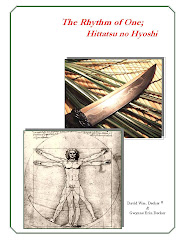What size blade should you carry? This blog concerns item number 2 in our previous blog about what knife to buy. First, you need to define the purpose, what is your need for carrying a knife. Obviously if you are in the military and stationed in a combat zone then your need is for a knife large enough to dispatch an enemy combatant but light enough to carry on a daily basis. (Most likely you will also want to carry a medium to large size folder for utilitarian purposes.) In these conditions I would recommend a knife with a blade no shorter than 6 inches and no longer than 10 inches. Even within this size category the optimum blade length will depend on whether you are fighting a jihadi in lightweight clothing, where six inches maybe sufficient, or a Spetsnaz in full combat gear and body armor. In our upcoming book we discuss the major effect that clothing has on the type, size, and format of the weapon you should carry. This topic is an interesting study in itself. Making your selection is no different than choosing a mission-specific firearm. An M-4 in .223 is not the best choice for an 800 yard shot and a .50 BMG Barrett is not much good for clearing room-to-room in a building. But in general, the military combatant will be best served with a larger knife. A good example is this Fighter by Matt Lamey with a hand-forged, ten inch blade.

Many states have an upper limit on legal blade length of around four inches. I don’t know how they picked that size and in some states even carrying a two and a half inch blade may get you in trouble. You have to decide whether the risk of being attacked or killed is higher than the risks associated with carrying a weapon. No one else can make that decision for you. One time I had to make a fast run into NYC to find my daughter after she missed a flight. I am not going to tell you what I was carrying, just in case any over-zealous LEOs are reading my blogs. Lets just say that I was dressed for the occasion. Do not assume that around home or on local runs to the convenience store that you are safer and therefore do not need to carry (knife or handgun). Quite often it is under these circumstances that your guard is down and you are the most susceptible to an attack. Remember that not everyone you are going to come into contact with today is from your hometown. But to be reasonable, most people in your locale are probably not wearing body armor and carrying a knife with a four inch blade will suffice for most of your self defense needs. This 6.5 inch bladed Bowie, hand-forged by Matt Lamey, is a superb in-between size for EDC and it’s elegant to boot. It would be a terrific carry knife in a discreet shoulder harness.

On the very bottom end of the size scale are the popular two-finger knives and neck knives. Are these serious weapons? You bet they are! Illustrated is a two finger knife by a guy named Josh. This little knife is capable of creating a very nasty wound channel. But this still needs to be put into perspective. Would such a tiny knife stop a crazed terrorist who is intent on blowing a hole in your camp perimeter? Most likely the answer is no. Will cuts from a small knife stop a mugger or rapist? Damned right they will unless he is so strung out on crack that he doesn’t feel anything. So for the average citizen carry I am going to take a chance and say that even smaller knives with a 2-3 inch blade will bail you out of most encounters. To make the most of any weapon requires some serious training and a basic familiarity with human anatomy. You cannot stop a machine unless you know how it works. Unlike a firearm, a center of mass shot with a 2 inch blade is not going to produce the same results as a .357 magnum.

Ultimately the test of whether a knife is the right size or not is based then on two distinct hypothesis’. Hypotheses One: You need to kill your opponent and do it as quickly as possible (military and maybe LEO). Hypotheses Two: You need to stop an attack and escape, with the very slight possibility of continuing on to Conclusion One (primarily civilian and also LEO). Conclusion number one calls for a knife falling on the larger end of the size scale. Conclusion number two is closer to the opposite end. An entire world of cutlery choices, biases, and expert opinions lies somewhere in between the two.






No comments:
Post a Comment